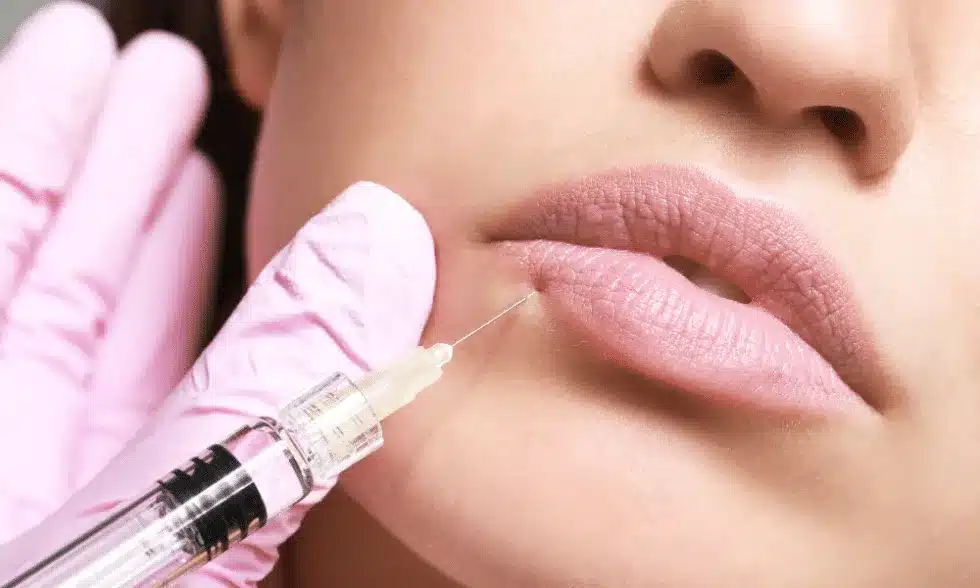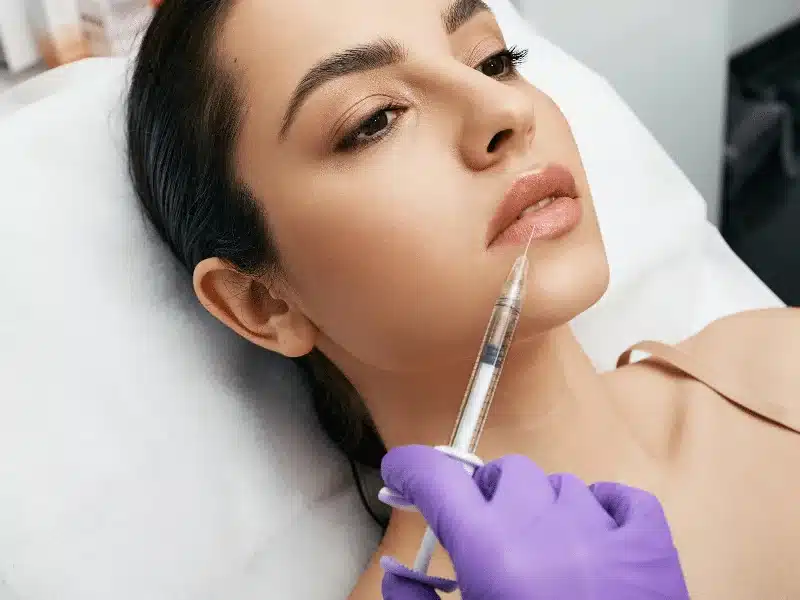
Lip fillers add volume, shape, and definition to the lips. There are several kinds of lip fillers available, each with its own unique properties and benefits.
In this article, I’ll talk about the types of fillers for your lips and their benefits. I’ll also answer the most commonly asked questions about these fillers.
What Are Dermal Fillers?
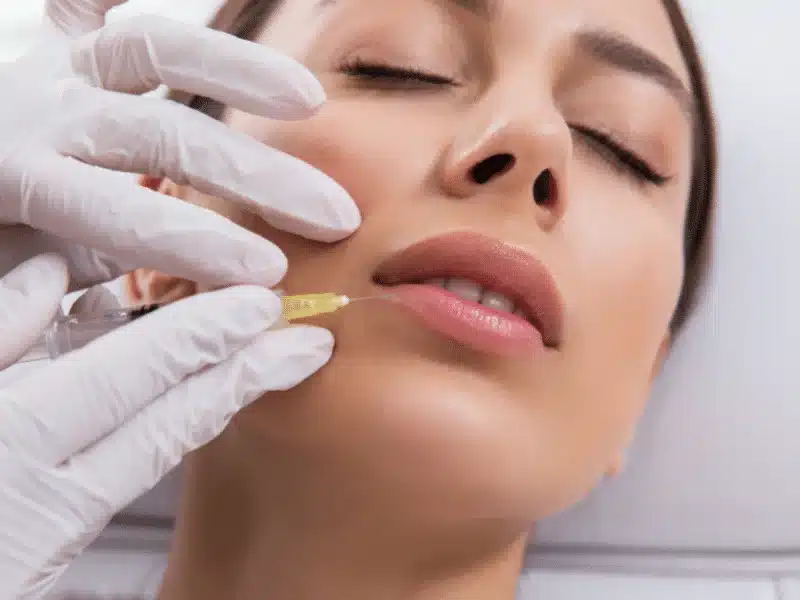
Cosmetic facial surgeons apply dermal fillers to minimise skin depressions and scars, reduce the indications of ageing, and treat deep wrinkles and fine lines in the face. Dermal fillers may also be used to fill in empty regions around the eyes.
In addition, dermal fillers can be particularly beneficial in those who are showing early indications of ageing or as a value-added component of facial rejuvenation surgery.
In reality, the face gradually loses subcutaneous fat as we age. Because the facial muscles now operate closer to the skin’s surface, crow’s feet and smile lines become more visible. Dermal fillers also help reduce facial wrinkles while restoring lip volume and fullness to the face.
What Are Lip Fillers?

Lip injections are usually made from synthetic hyaluronic acid (HA), a natural substance in your body. They do not slow down the ageing process. However, they may assist to postpone the necessity for more invasive lip augmentation procedures, such as lip implants or lip lifts.
Lip filler injections also help you achieve your desired appearance, which enhances your self-esteem.
Lip injections give transient advantages as a non-surgical approach to lip enhancement. Patients need additional treatments every six to nine months to keep the desired results. Semi-permanent treatments, on the other hand, have a two-year lifespan.
Types of Lip Fillers
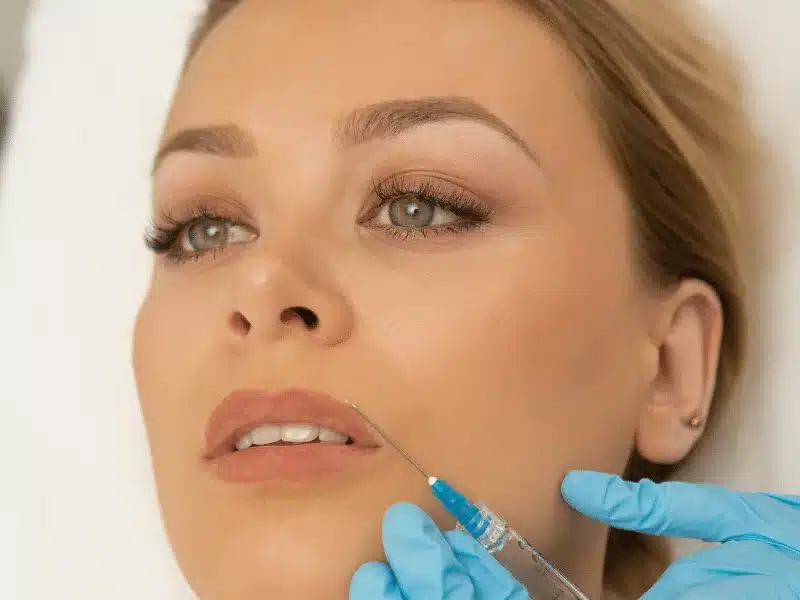
Here are the most common kinds of lip fillers:
Hyaluronic Acid Fillers
Hyaluronic acid is a naturally occurring component of connective tissue in the skin. Because of its safety and efficacy, it is the most often used filler in cosmetic face operations.
HA injections also help reduce fine lines and deeper wrinkles and restore skin volume.
The size of the particles in HA acid products varies to address various wrinkle depths: thinner particles for fine lines and bigger particles for deeper folds and wrinkles.
The two most popular HA lip fillers on the market are Restylane and Juvederm lip injections.
Calcium hydroxyapatite Lip Fillers
Calcium hydroxylapatite (CaHA) is a biocompatible FDA approved dermal filler that has been approved by the FDA to enhance the look of mild to severe facial wrinkles and folds.
CaHA is a suspension of homogenous microspheres inside a gel carrier of aqueous carboxymethylcellulose. It is a long-lasting yet temporary filler compatible with human tissues. Calcium hydroxylapatite may also be applied to treat the symptoms of face fat loss caused by HIV infection.
Polyalkylimide Lip Fillers
Polyalkylimide is a semi-permanent filler that is commonly used to repair wrinkles, folds, and furrows. Particularly effective in correcting nasolabial folds. It may also be injected to conceal pitting scars and plump thin lips.
Polyalkylimide has relatively low reactivity with human flesh, making it biocompatible and eliminating the need for an allergy test. It is radiotransparent, which means it will not interfere with x-rays.
Over the course of roughly a month, a thin coating of collagen grows surrounding the injection. Eventually, the gel is totally surrounded. In addition, a large amount can be injected in a single operation.
Polylactic Acid Lip Fillers
Polylactic acid is an artificial dermal filler injected into the face to stimulate the body’s own collagen synthesis. This non-toxic, biodegradable compound has been utilised as a therapeutic agent for over 40 years.
These substances differ from other dermal fillers as it does not offer instant effects. It instead encourages your body’s collagen production, so improvements occur gradually over a few months. You will most likely require up to three monthly treatments to attain the desired outcomes.
Additionally, your own collagen is re-stimulated with each treatment. The complete impact might then take 4 to 6 weeks. While considered semi-permanent, patients may still require touch-ups from time to time.
Collagen Lip Fillers
In the field of injectable lip enhancement and lip augmentation, collagen is the market leader. A non-surgical aesthetic technique, collagen lip injection may increase the volume of the lips and create a “pout” impression that can persist for months.
Formed from cow tissue, collagen lip injection may be applied to fill up wrinkles and acne scars. Additionally, to plump up lips as well. Collagen injection therapy can potentially be used with other cosmetic treatments, such as Botox.
Injected directly under the skin, collagen is used for a local effect. The complete collagen injection technique takes around 10 minutes. However, it doesn’t call for a general anaesthetic.
Permanent Silicone Lip Fillers
A smooth, solid silicone implant is inserted into the lips during a permanent silicone lip filler cosmetic treatment. This improves the size and contour of your lips for a long time.
Silicon fillers or implants, a rather more permanent option, are inserted under lip fats and over the lip muscles in a thin tunnel constructed by surgeons to fit the implant. Incisions are often made near the edges of the mouth. Although depending on the cosmetic procedure, they may be made elsewhere on the lips.
A permanent silicone filler or implant is intended to restore the perioral region to a younger and aesthetically acceptable appearance. This in-office treatment lasts around 30 minutes, and you are returned home the same day.
Fat Transfer Lip Injections
Using the patient’s own tissue for lip correction is another option for synthetic fillers and implants. Another excellent alternative for lip augmentation is fat injections, a sort of autologous lip augmentation. Transferring fats to the lips, like natural lip fillers, is an in-office surgery.
Fat is taken from another part of your body, cleansed, and put into your lips during the procedure. Transferring fats to the lips requires between sixty and ninety minutes to accomplish.
The patient is free to go on the day of surgery. Lip augmentation with fat usually remains plump for at least five years.
What Is the Best Type of Filler for Lips?
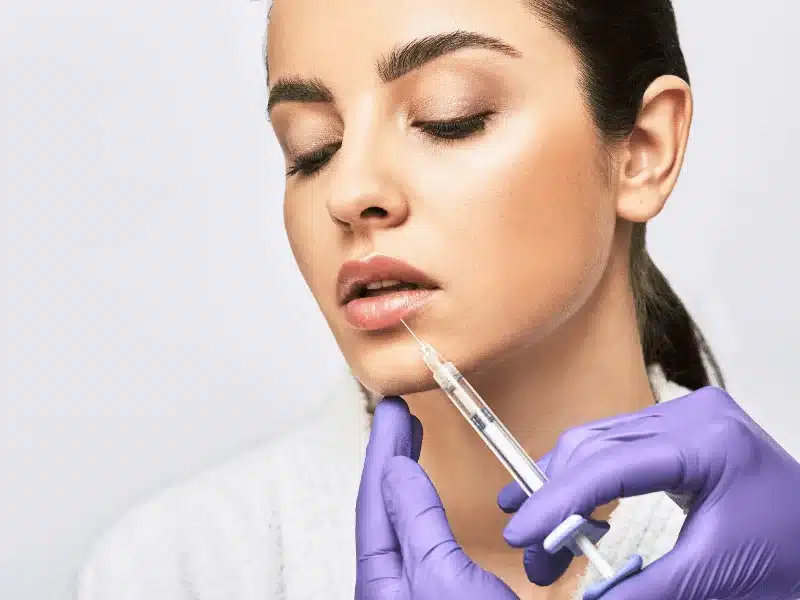
HA fillers reduce the appearance of fine lines and wrinkles on the lips.
Though collagen fillers can improve saggy skin in certain regions of the face, they don’t increase volume. As a result, they aren’t usually ideal for lip augmentation.
The most frequent concern expressed by clients revolves around volume loss. The consistency and thickness of the gel determine the thickness and texture of HA fillers.
Benefits of Hyaluronic Acid Fillers

HA fillers are a type of injectable treatment that is used to improve the appearance of fine lines and wrinkles on the face. They are made from a naturally occurring substance called hyaluronic acid, which helps to plump and hydrate the skin.
Some benefits of HA soft tissue fillers include:
Non-surgical
Hyaluronic acid fillers are a non-surgical procedure, which means that they do not require any incisions or general anesthesia. This can make the procedure less risky and more convenient than surgical options.
Quick and relatively painless
Hyaluronic acid fillers are usually quick and relatively painless, with most people returning to normal activities immediately after the procedure.
Natural-looking results
Hyaluronic acid fillers are designed to mimic the natural hyaluronic acid found in the skin, which can help to achieve a more natural-looking, youthful appearance.
Side Effects and Risks of Hyaluronic Acid Fillers
Fortunately, approximately 90% of HA filler-related adverse effects are mild, reversible, and temporary. These effects include swelling, bruising, redness, and itching on the injection sites.
Which Lip Fillers Last the Longest?
According to many plastic surgeons, Restylane and Juvederm are the two most durable and long-lasting fillers.
Both of them contain hyaluronic acid, which helps to soften and smooth out lines and wrinkles. Hyaluronic acid holds a thousand times its own weight in water, giving the skin a youthful, supple, and smooth appearance.
What Kind of Lip Fillers Do the Kardashians Use?
There are numerous fillers ideal for restoring volume loss. The amount of plump or volume to add is entirely up to you.
However, Kardashian prefers Juvederm, a filler brand produced by Allergan. Despite the fact that other Juvederm lip fillers are available, the Kardashian team prefers Juvederm Ultra Plus.
What Types of Dermal Fillers Are Available?
The most common types of dermal fillers available globally are hyaluronic acid, polylactic acid, polyalkylimide, collagen, calcium hydroxylapatite, and polymethyl-methacrylate microspheres (PMMA).
Who Gets Lip Fillers?
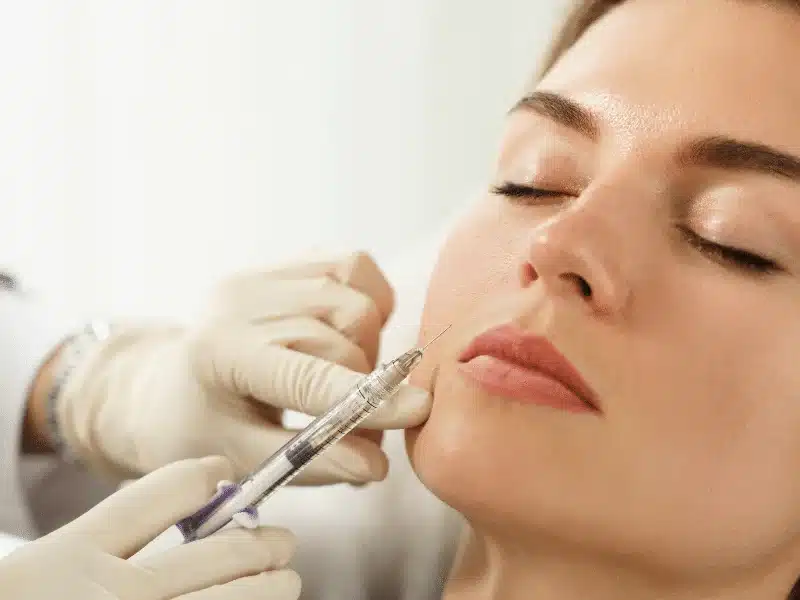
Ideal candidates for lip fillers include:
People with thin or uneven lips
Lip fillers add volume and shape to thin or uneven lips, helping to create a more symmetrical and balanced appearance.
People with fine lines or wrinkles around the mouth
Lip fillers plump and smooth out fine lines and wrinkles around the mouth, helping to give the lips a more youthful and refreshed appearance.
People who want to improve the overall appearance of their lips
Lip fillers in London enhance the overall appearance of the lips by adding volume and definition.
What Happens Before a Lip Filler Procedure?
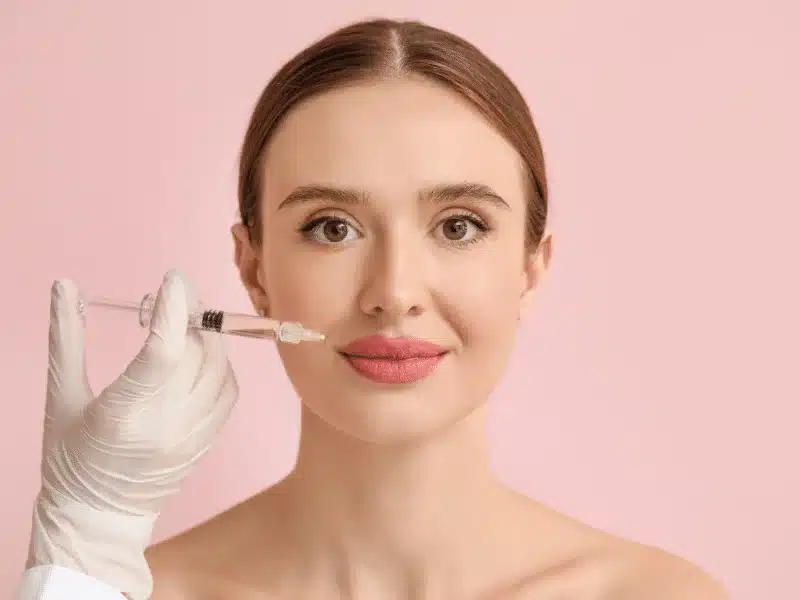
During the consultation, plastic surgeons or cosmetic doctors will ask about your medical history and any medications you are taking. They will also evaluate your lips to determine the best treatment approach.
In addition, your doctor will discuss your goals and expectations for the procedure and explain the different kinds of available lip fillers.
You must be honest and open with your provider during the consultation. Be sure to let them know about any allergies or medical conditions you have, and tell them about any medications you are taking, including over-the-counter medications and supplements.
Your provider will also give you specific instructions on preparing for the procedure, which may include avoiding certain medications or activities and arranging for transportation home. It’s important to follow these instructions carefully to ensure a smooth and successful procedure.
What Happens During a Lip Filler Procedure?

For comfort, your surgeon will use a numbing cream to numb both b and top lips.
At this stage in the treatment, you may feel a tiny prick. Once your lips are sufficiently numb, your surgeon will inject the lip filler straight into them. After the lip filler treatment, you may be able to return home the same day.
What Are the Advantages of Lip Fillers?

Lip fillers can do a lot for you, including:
Quick and relatively painless
Lip fillers are usually quick and relatively painless, with most people returning to their normal activities immediately after the procedure.
Natural-looking results
Lip fillers produce a more natural-looking, full, and defined lip appearance. The treatment works by adding volume to the lips rather than removing or altering them.
Customisable
Lip fillers can be customised to suit an individual’s specific goals and needs, allowing for a wide range of treatments to achieve the desired results.
Do Lip Fillers Hurt?
Lip fillers are relatively painless, but some people may experience discomfort during the injection process.
To minimise discomfort, your doctor applies numbing cream to the injection sites.
What Is the Recovery Time?
Most people return to their normal activities immediately after the procedure. However, some people may experience swelling, tenderness, and redness around the treated area, which is normal and usually resolves on its own within a few days.
Visit Dr. Julian De Silva
Do you want to add volume to your lip area using injectable fillers? Are you looking for naturally produced injections with minimal side effects?
Contact us to book a consultation with Dr. Julian De Silva now! Alternatively, you may visit us at 23 Harley St, London W1G 9QN, UK.

